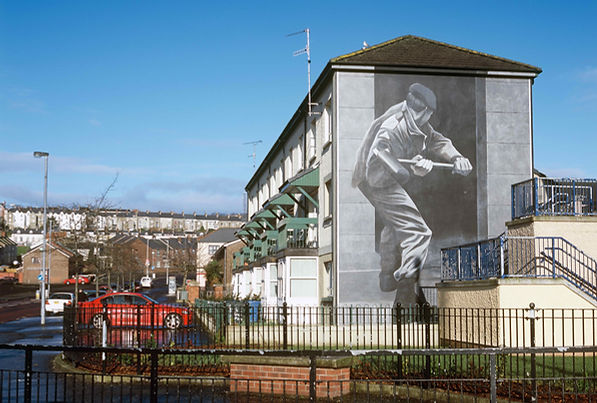
ART & PEACEBUILDING

Art and Peace Building
At first glance, it may seem surprising that the murals of The People’s Gallery could serve as instruments of peace and reconciliation. For many, they are painful reminders of a past they would prefer to leave behind and forget.
Many politicians seek to rebrand Northern Ireland as a safe, dynamic, and inclusive post-sectarian society that is economically vibrant and forward-looking. However, Northern Ireland has never had—and may never have—a proper truth and reconciliation process.

Despite the peace agreement, it remains far from ‘post-conflict.’ Some critics describe the current power-sharing government as ‘institutionalized sectarianism,’ with the two main parties merely dividing the ‘spoils of war.’ Meanwhile, ordinary citizens are often urged to “move on” from the past, leaving many traumatised survivors not only without public acknowledgment of their suffering and losses, but rendered effectively voiceless.

Against this backdrop, The People’s Gallery offers various talking points for remembering the past and processing painful memories. Unlike typical sectarian murals that can be found across Northern Ireland, the murals by the Bogside Artists are not meant as political propaganda or territorial markers. The murals do not carry aggressive or defensive images or slogans. There are no paramilitary symbols, balaclavas, flags or rifles. There are no shamrocks, harps, or other emblems tied to Irish history, mythology or ethnic identity. The murals do not signal any threat, intimidation, or glorification of violence. Instead, they tell the stories of the Troubles as experienced by them and their community on a daily basis, showing what it meant to live through these disturbing times.
The murals offer a safe space to confront painful memories and raise difficult, often controversial questions such as:
-
Why did the British media routinely portray the Catholic uprising as a tribal religious conflict requiring British intervention, rather than recognising it as a legitimate civil rights movement that was part of a global movement for civil rights?
-
Who authorised the violence that devastated their communities—whether it came from the outside or from sources within their own ranks?
-
Did all hunger strikers die based on their own convictions, or were some forced to serve as sacrificial lambs?
-
Why were the soldiers responsible for the deaths of innocent children—whether through deliberate action or tragic error—never brought to justice?
-
How is it possible that individuals with criminal pasts and blood on their hands have since come to hold positions of power and public office?



